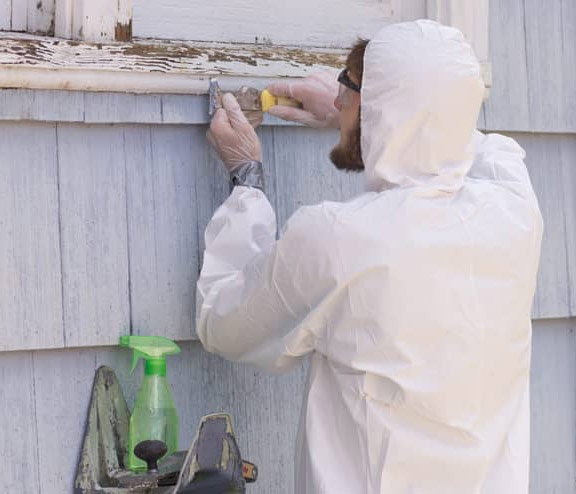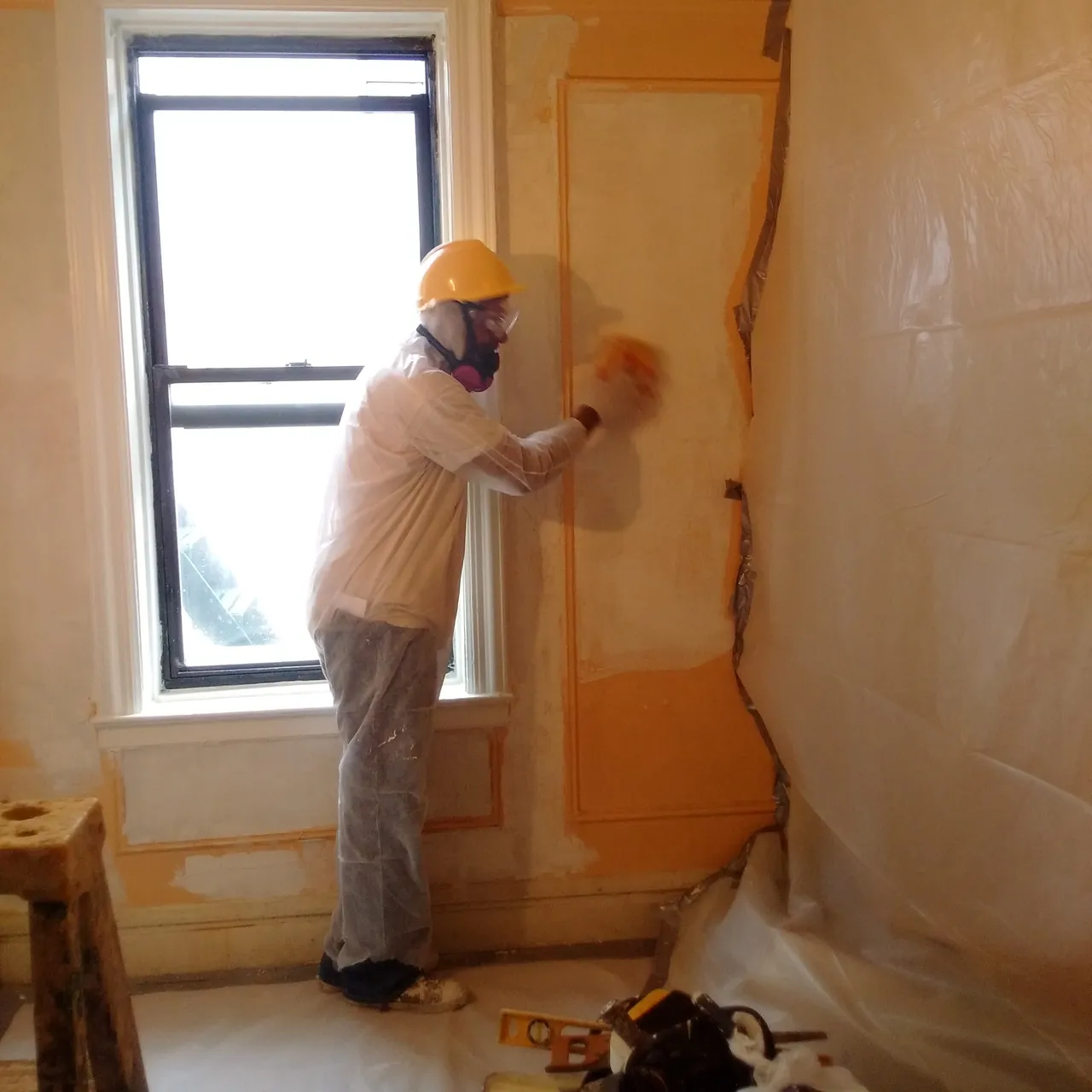NYC Lead Paint Removal Company-- Ensuring Safe and Lawful Compliance
NYC Lead Paint Removal Company-- Ensuring Safe and Lawful Compliance
Blog Article
Step-by-Step Process for Effective Lead Infraction Remediation
Following this, adherence to government and state guidelines is extremely important to formulating an effective removal plan. The actual removal needs skilled personnel to carry out these strategies while purely following safety protocols. What takes place after the remediation is completed?

Discovery and Evaluation
Discovery and evaluation are essential actions in the removal of lead violations. To make sure a reliable removal procedure, it is necessary to carry out an extensive evaluation of the environment where possible lead direct exposure exists. The initial stage of discovery involves determining sources of lead contamination, which can be found in paint, water pipes, dirt, and dirt. Making use of advanced diagnostic devices such as X-ray fluorescence (XRF) analyzers and atomic absorption spectroscopy (AAS) can supply specific dimensions of lead focus.
This includes reviewing the extent and severity of contamination, as well as identifying populaces at danger, especially youngsters and expectant ladies. The collected information ought to be thoroughly documented to support the growth of an effective removal technique.
In addition, it is essential to focus on locations with the greatest degrees of contamination and those that pose the best health risks. Reliable interaction with stakeholders, consisting of homeowner, citizens, and public health officials, is important for ensuring that all celebrations are informed about the searchings for and the subsequent steps required for remediation. This first discovery and assessment phase prepares for a successful lead infraction remediation procedure.

Legal and Governing Compliance
Navigating the landscape of lawful and governing compliance is a critical element of successful lead offense removal. Compliance ensures not just the safety and security of damaged populations yet likewise the reliability and legal standing of the organization liable for remediation. Regulations controling lead contamination are diverse, including federal, state, and local legislations. At the federal level, the Epa (EPA) sets rigorous criteria under the Toxic Materials Control Act (TSCA) and the Lead-Based Paint Remodelling, Fixing, and Paint Policy (RRP Policy)
State and regional regulations can differ, typically enforcing additional obligations or more strict requirements. Therefore, a comprehensive understanding of all relevant legal frameworks is crucial. This includes careful documentation of all removal activities to demonstrate conformity. Failure to stick to these policies can cause severe charges, including hefty fines, legal activity, and reputational damage.
Engaging legal specialists focused on ecological law can help with browsing these complexities. Routine training and certification for all employees involved in the remediation procedure are also required to guarantee adherence to safety and regulative standards. By focusing on legal and governing compliance, organizations can properly minimize risks and attain an effective removal outcome.
Planning the Remediation
Efficiently intending the remediation of lead offenses begins with a complete analysis of the infected site. This data-driven technique guarantees that remediation initiatives are appropriately targeted and effective.
As soon as the contamination is mapped, a risk analysis ought to be performed to review prospective health and wellness dangers to human beings and the atmosphere. Lead Violation Removal in NYC. This assessment ought to consider variables such as exposure paths, populace vulnerability, and eco-friendly impacts. The understandings collected will develop the basis for choosing an appropriate remediation technique
Subsequently, establishing clear, achievable purposes for the remediation job is crucial. These objectives need to align with governing requirements and stakeholder assumptions to make sure compliance and area acceptance. Developing an in-depth removal strategy that outlines methods, timelines, and source allotment will certainly facilitate an organized method to the cleanup process.
Additionally, it is important to involve with stakeholders early and preserve transparent interaction throughout the planning phase. This includes educating local communities, acquiring necessary licenses, and coordinating with governing firms to make sure all legal and procedural needs are met. A well-crafted remediation strategy not only addresses the contamination properly yet likewise develops count on and cooperation among all celebrations entailed.
Executing the Remediation
With a well-structured remediation strategy in position, the emphasis shifts to the actual execution of the removal activities. This phase includes activating the necessary resources, consisting of competent employees, specific equipment, and high-quality products. Begin by clearly marking functions and duties to make sure liability and seamless coordination among employee.
This includes setting up control areas to protect against lead dirt and particles from spreading, as well as employing air purification systems to maintain air quality. Utilize techniques such as wet scraping, you could try this out chemical removing, or encapsulation, depending on the extent and area of the contamination.
Throughout the removal process, conduct periodic inspections and air quality keeping an eye on to ensure compliance with governing criteria. visit the site Efficient interaction with stakeholders, consisting of residential property proprietors and owners, is important to keep them notified of progress and any kind of unexpected growths. By diligently adhering to these steps, the remediation activities can be executed efficiently and properly, ultimately mitigating lead hazards.
Post-Remediation Methods
Post-remediation approaches play a crucial role in making sure the long-lasting success of lead offense remediation efforts. These strategies include ongoing surveillance, upkeep, and area education and learning to avoid future lead exposure and make sure a safe setting.
First, normal tracking is vital. This entails periodic screening of the previously affected areas to make sure that lead levels remain within risk-free limits. Homeowner should establish a routine for these tests, ideally in cooperation with qualified environmental experts.

Third, educating the neighborhood plays a pivotal function in sustaining the benefits of removal. Locals and residential property managers need to be educated about the dangers of lead direct exposure and the very best techniques for keeping a lead-safe environment. Workshops, educational handouts, and neighborhood meetings can be efficient devices for disseminating this information.
Final Thought
Effective lead infraction remediation needs an have a peek at this site extensive, systematic approach including detection and assessment of contamination, adherence to lawful and regulatory criteria, careful preparation, and effective implementation of removal initiatives. This systematic procedure highlights the relevance of thoroughness and caution in attending to and mitigating lead contamination.
Report this page